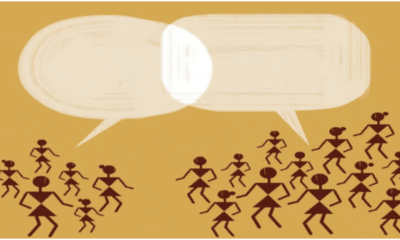
|
Getting your Trinity Audio player ready...
|
Wuhan has paved the way for greater understanding of the future
India and China are two great and ancient civilisations. They have shared millennia-old relations at civilisational level as well as socio-economic level.
Post-independence, India had established political and diplomatic relations with the People’s Republic of China. The first decade of the relationship witnessed great bonhomie culminating in the Panchsheel – the five principles of diplomatic intercourse.
The 1962 War has changed all that and soured the relationship. Disputes over borders, that had their roots in the War, continue to simmer to this day. But the two countries have started to renegotiate the relationship in the late-80s when Rajiv Gandhi made the first ever PM-level visit to China after the War in 1988.
After coming together in late 80’s, both countries have lived together without major confrontations in last three decades. Despite occasional border incidents like Sumdorang Chu and Doklam, we managed to broadly keep the relationship on an even keel.
The real upswing in the relations happened with the rise of the two great leaders; Prime Minister Modi in India and President Xi Jinping in China. Both have risen to power based on strong popular nationalist support and both have radical visions for the future of their respective countries.
In the multipolar world of the 21st Century world order, India and China are two important poles. Both are big and rising. Both realise that in a multi-polar setting that is leading to uncertainty and anxiety in parts of the world, the two have to play a vital role in ensuring stability. That calls for greater understanding between the two countries not only about the bilateral issues but also about the global power politics and trends.
Wuhan, the ‘informal’ summit that took place on 27-28 April between Prime Minister Modi and President Xi, is essentially about the two big and rising countries coming together to exchange views on overarching issues of global importance and sharing their respective visions and priorities for national development in the light of current and future international situation.
Wuhan has paved the way for greater understanding of the future of India–China relations based on mutual respect and trust for each other’s developmental aspirations and prudent management of bilateral concerns with mutual sensitivity.
We have unsettled borders, but we decided to maintain peace along those borders. We have a strong but lop-sided trade relationship. India faces massive deficit in its trade with China. China has agreed to work with us in bridging the trade gap. We have decided to work with China on some developmental projects in Afghanistan. We are looking forward to working together on many other bilateral and international issues including terrorism.
However, Wuhan was not the ultimate answer to all the troubles that plague our relationship with China. There are issues on which we continue to differ and disagree. One such issue is China’s much-touted Belt & Road Initiative (BRI). India continues to hold that the China Pakistan Economic Corridor (CPEC), that passes through the Indian territory in Kashmir under illegal occupation of Pakistan, cannot be supported by India.
Besides this primary objection, India also strongly feels that initiatives like the BRI, that involve several countries, should truly represent the multilateral spirit of multi-stakeholderism, rather than unilateralism. In order to avoid criticisms like ‘debt-trap diplomacy’, the BRI should become more inclusive for different stakeholders.
Prime Minister Modi is a hands on with country’s foreign policy. He has introduced a major out-of-the-box transformation in it.
He has brought in the concept of ‘de-hyphenation’ in India’s foreign policy. It means that India’s relationship with any given country will be based on bilateral interests without prejudice to its relationship with any third country. It is a difficult exercise, but under determined leadership of Modi, India has managed good relations with Israel and Palestine at the same time; and with Iran and Saudi Arabia too.
Similarly, our relationship with China is significant for greater regional and global understanding and stability. It however doesn’t anyway affect our time-tested relations with other big powers like the US and Russia. We are committed to pursuing our relations with all the major powers in the world uninfluenced by our regional priorities.
Our relationship with China also doesn’t in any manner alter our commitment to peace, stability and rule-based order in the Indo-Pacific region and beyond. India has always supported the just and dominant view that maritime commons should be freely accessible for all the countries in the world. No country should have exclusive claim based on its military and political hegemony over these commons.
The ASEAN group of nations is central to the Indo-Pacific region. Greater engagement for peace between India and China will help reassure regional forces like the ASEAN, besides helping strengthen efforts for stability in regions across Asia and Pacific like West Asia, Middle East and the South China Sea.
India’s dependence on several of these regions and countries can’t be understated. Over 55% of India’s sea-borne trade passes through the South China Sea. India thus has huge stakes in managing peace, freedom of navigation and overflights in the region.
The new India-China relationship can be summarised by way of a saying: ‘Coming together is the beginning; Living together is progress; Working together is success’.
After coming together three decades ago and living through the ups and downs, we have now reached a stage where the two countries have started working together on regional and global platforms and issues.
We have a long way to go for succeeding in these efforts. But we must realise that that way is only through investing sincerely in peace and rule-based world order.
(This essay is adapted from Ram Madhav’s talk delivered during Shangri La Dialogue on June 1, 2018 in Singapore. The article was originally published in Open Magazine on June 3, 2018. Views expressed are personal)



